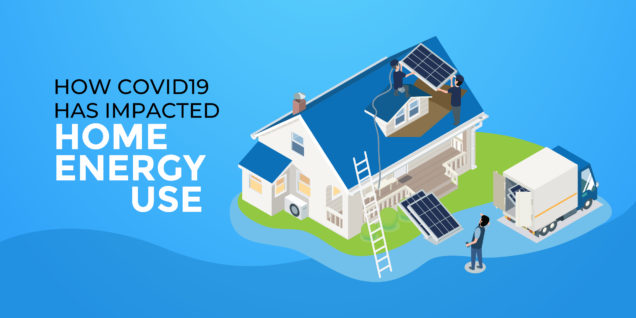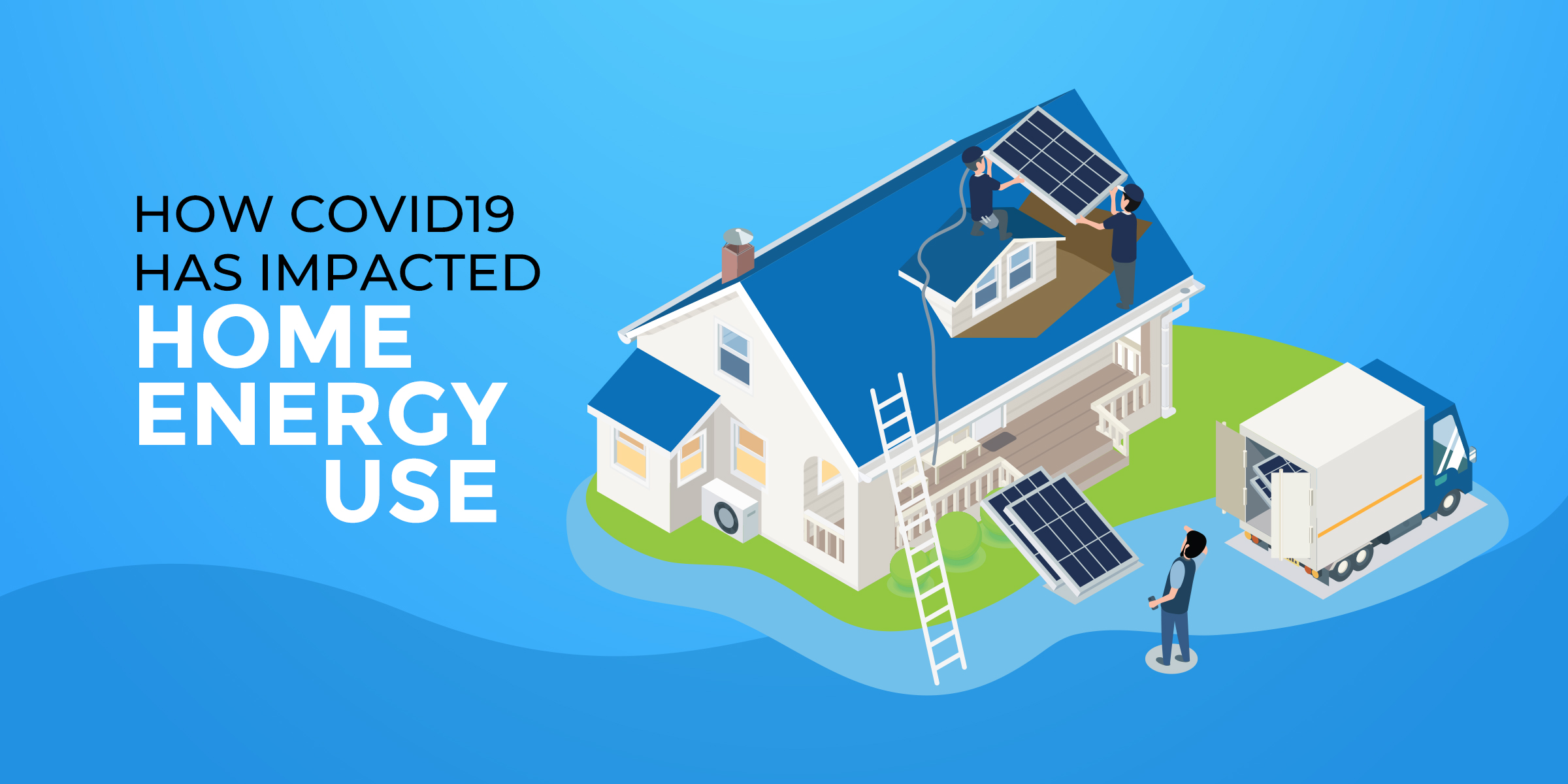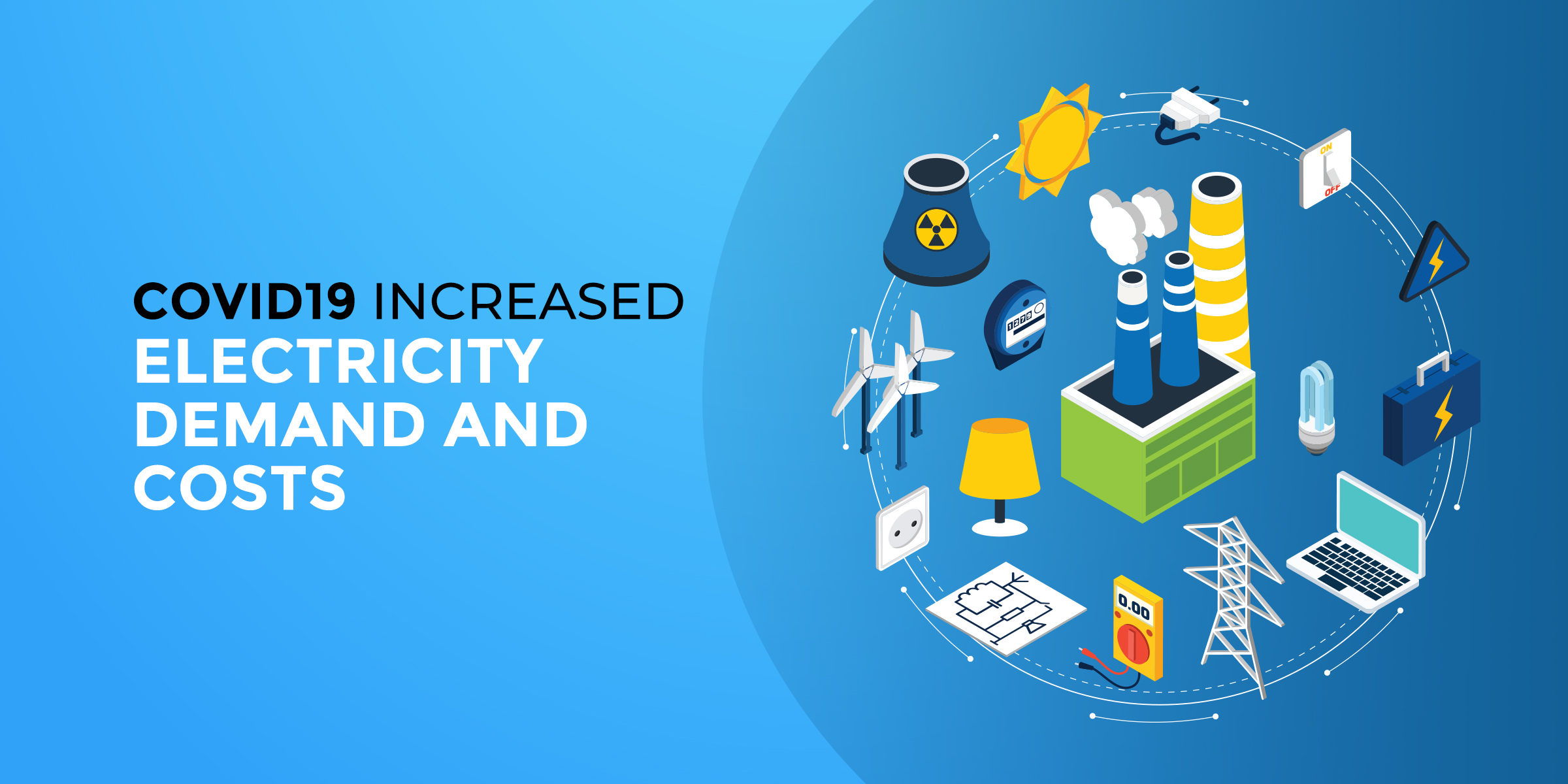The COVID-19 pandemic has seemingly affected every single aspect of our lives. From putting millions of Americans’ lives at risk due to the virus’s deadly symptoms to keeping millions more out of work due to the pandemic’s effects on the economy, this country has experienced a seismic shift in our everyday lives.
In the last six months, thousands of businesses, school districts, and universities have grappled with decisions on whether their workers or students stay at home instead of congregating at workplaces or in schools. As a result, the home energy sector has experienced various notable changes in overall electricity uses.
These changes are just one of the many social ripple effects that the pandemic has caused since March, but holds serious implications on how much money homeowners and residents spend on energy in the future, and the type of policies and change that the country is likely to see in the coming months.
In this article, we provide an overview of how the home energy sector has changed since COVID-19 struck the United States, and how the country has responded.
[toc]
COVID19 increased electricity demand and costs
Like we previously mentioned, the pandemic has forced many to either continue their work from home, left them unemployed, or simply unwilling to venture outside in any capacity.
As a result, both home energy use and overall costs increased during the first few months of nationwide lockdown. During the first few months of the pandemic, average home electrical usage increased by 22% when compared to 2019 averages.
This meant that residents were paying around 22% more on their monthly electricity bills. When put side by side with April 2019 averages, the average American was likely paying $22 to $25 more on their monthly bills in April of 2020, perhaps even higher based on regional utility costs.
This might not come as a surprise for many considering the fact that staying at home more generally correlates with using more electricity. To delve further into what specifically contributed to this trend and how this is affecting homeowners, let’s take a closer look at how key events during the pandemic and its effect on Americans’ behavior.
Timeline of increased home energy use
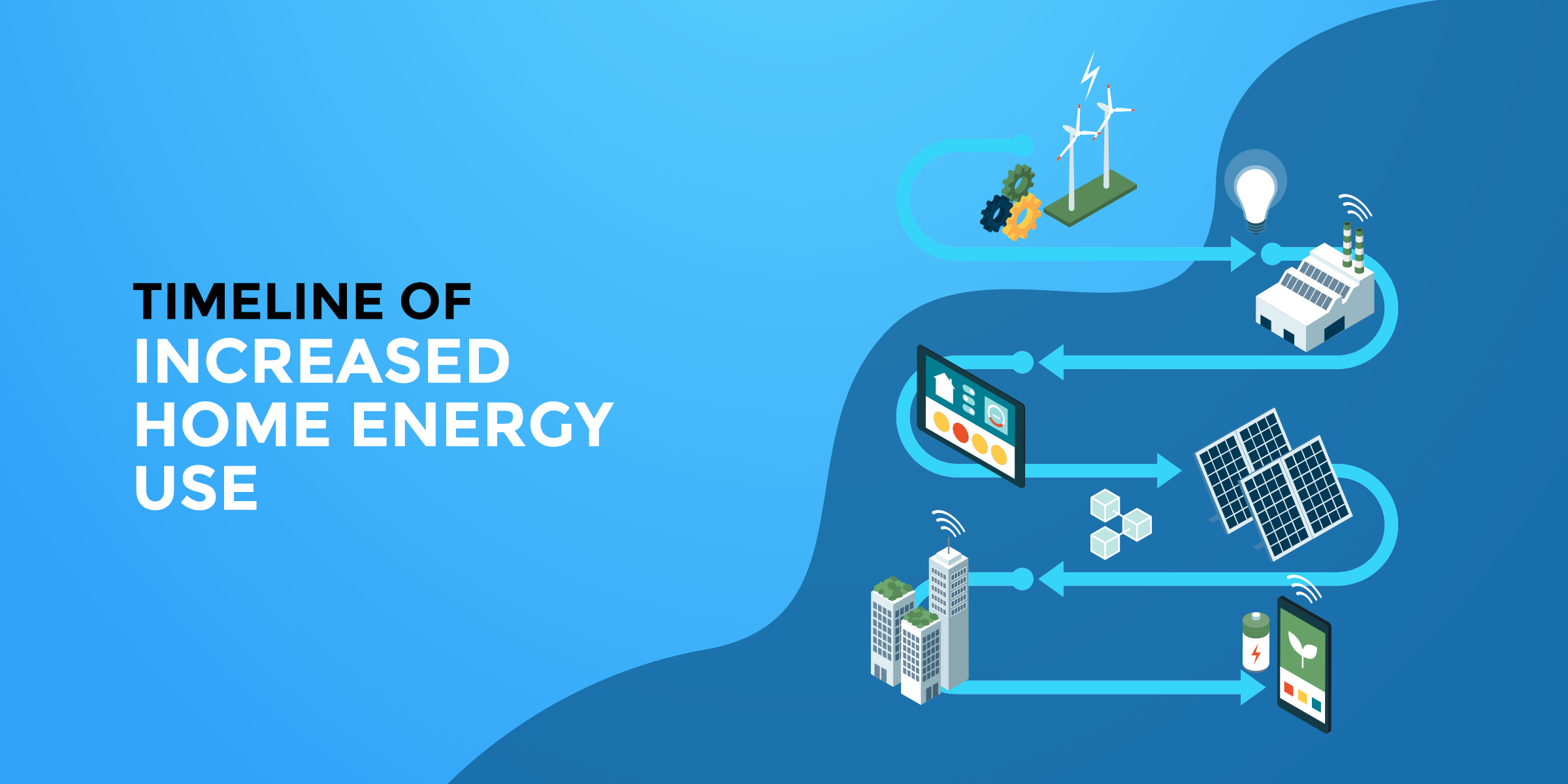
Based on statistical trends, home energy demand increased significantly during the month of March. Given the fact that many governors issued states of emergency at this point in March, it makes sense for home energy demand to spike due to the number of people staying home.
From March 3 to March 10, states such as California, Massachusetts, New York, and Ohio declared states of emergency. Universities around the country began to send students home and start online classes at this time. With corporations such as Google and Amazon asking employees to work from home, and both the NBA and NHL postponing their season by the end of March, the lockdown had essentially gone into full swing.
Since then, the U.S. economy has been trying to get back to normal by reopening businesses around the nation. This, along with many other potential factors, has seemingly stabilized residential electricity costs. The national average cost of electricity was 13.28 cents per kilowatt-hour in June, down .08 cents from June 2019.
However, those numbers should not diminish how drastically the cost of home energy changed in March. There are several important factors that contributed to these changes that have strong implications for the future of America’s home energy sector.
The “Duck Curve”

One of the main reasons why home energy consumption increased during the first few months of the pandemic was because of changes in what’s called the “duck curve.”
The “duck curve” refers to a graph that shows the change in electricity throughout any given day. It’s important in this discussion since the curve always shows drops in electricity use by households in the middle of the day, generally between 10am and 4pm. This is because most people are at work during this time and they aren’t using much electricity in their homes.
The pandemic forced the duck curve to flatten since millions of Americans were stuck at home during the usual work hours. This meant that energy consumption was relatively consistent throughout the entire day instead of a sudden dropoff from the morning into the afternoon.
In states like New York where the cost of living is generally higher, apartment residents saw a 23% increase in energy consumption from March 30th to April 3rd when compared to the week of March 2nd. This significantly increased the cost of living and contributed to the widespread financial troubles Americans experienced as a result of the stagnant economy.
As such, the flattening of the duck curve is a key factor in increased home energy consumption. These changes are clearly having an impact on the costs of home energy, and placing a burden on many residents across the country.
Remote work and home energy
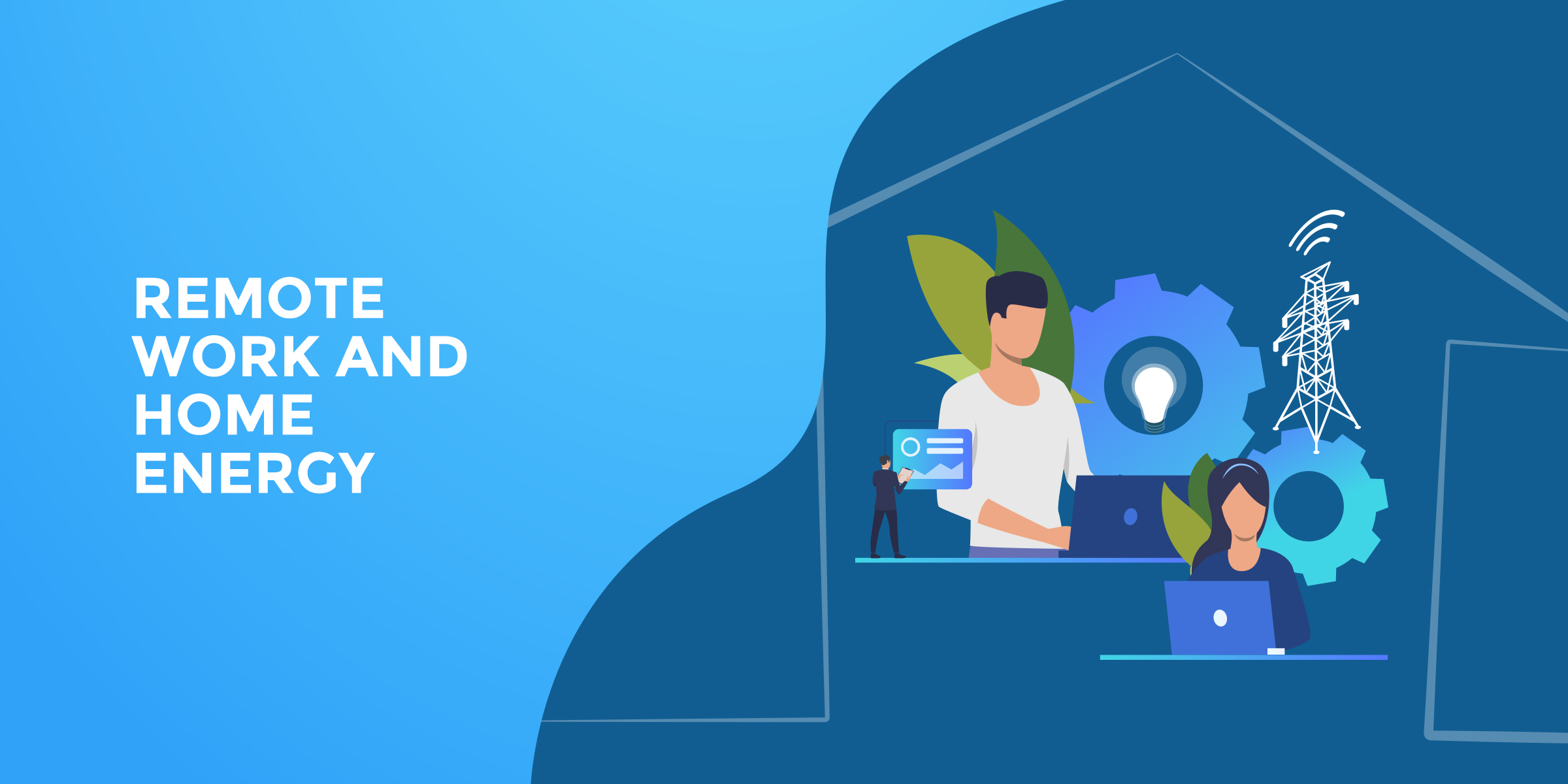
As the pandemic discourages Americans from going outside at any capacity, remote work has become increasingly popular.
In fact, 42% of the U.S. labor force is estimated to be working from home at this time. States like California have seen their residential energy use rise from 15% to 20% during the pandemic, while New York experienced a 3% increase on their own. The International Energy Agency is currently projecting that remote work will increase home energy consumption by as much as 23% in the coming years.
Given these projections, it’s easier to understand why the duck curve discussed in the previous section has seen such a drastic change. Instead of sitting in an office, employees are performing the same duties at home during regular work hours.
It’s not unreasonable to assume that these remote work trends will continue in the coming years, as a survey by the Harvard Business School found that one in six workers are projected to work remotely at least two days a week for the foreseeable future. Workers are seeing the benefits of doing their jobs at home, and also are concerned about their safety during these times.
This means that home energy costs are likely to rise, or at the very least remain higher than in previous years. As long as people stay home and use electricity during remote work hours, home energy demand and consumption will remain high.
Relief efforts and call for change

With stay-at-home orders, increased remote work, and the crippled economy, millions of residents across the country are struggling to pay rising home energy costs.
The federal government has taken steps to address the issue with stimulus checks through the CARES Act and the Low Income Home Energy Assistance Program (LIHEAP) providing additional funds and assistance to families having trouble paying their home energy bills.
With the winter season looming, home energy consumption is likely going to increase. With many states continuing to encourage residents to stay inside and avoid going out as much as possible, the demand for home energy relief programs will likely rise.
Local governments, state departments, and nonprofit organizations around the country are advocating for policy changes that address increasing home energy costs. For example, Maryland’s nonprofits are advocating for the state government to use some of the funding used for energy efficiency programs to be diverted to financial relief services to help low-income families pay their energy bills.
Exactly how long these relief efforts are going to be needed is uncertain. As long as the pandemic places restrictions on people’s ability to get out of the house during the day, homeowners and residents are likely going to need these programs to pay for the monthly energy bills.
What next?
The U.S. Energy Information Administration projects that the total U.S. electricity consumption in 2021 will be very similar to that of 2020. They confirm that summer cooling demand and increased energy use as a result of stay-at-home orders contributed to higher overall usage during the past 6 months.
However, the increase in home energy usage has inspired a greater demand for more energy efficiency. The EIA projects that the renewable energy sector is likely to grow more than natural gas or coal in the coming months, adding 23 gigawatts of wind energy capacity and 13 gigawatts of solar energy capacity in 2021.
It’s more likely than not that the home energy trends we’ve seen in the past few months will continue. Remote work is becoming an increasingly attractive option for American workers, while schools and universities are similarly opting for online classes.
This means that federal, state, and local governments must be ready to tackle rising home energy costs, while homeowners need to be aware of their monthly bills going forward. With the pandemic changing how we view the world every single day, it pays to stay vigilant.

